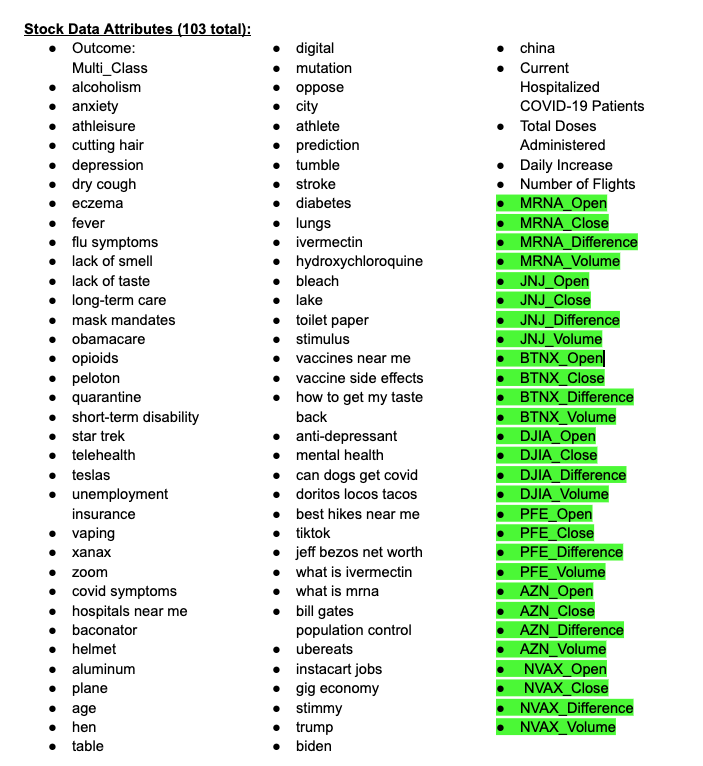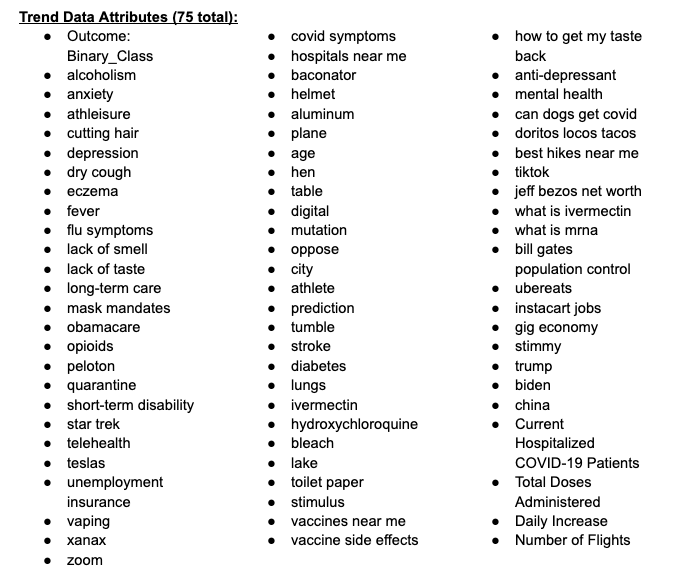Our data sets
Google Trend Data and Stock Data
Data Source: Stock Data
Data Source: Flight Data
Data Source: Vaccination and Hospitalization Data
Date Range of Data: December 1st, 2019 - February 15th, 2022
What stock data we choose?
We decided to use the daily opening and closing stock price, the change in price for the day, and the volume traded from companies that produced vaccines. These companies are Moderna, Pfizer, BioNTech, AstraZeneca, and Johnson and Johnson. We also decided to use the same values from the Dow Jones Industrial Average to get an overall scope of the market daily.*Attributes highlighted in Green are the stock data attributes

